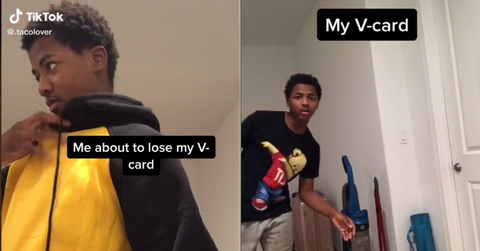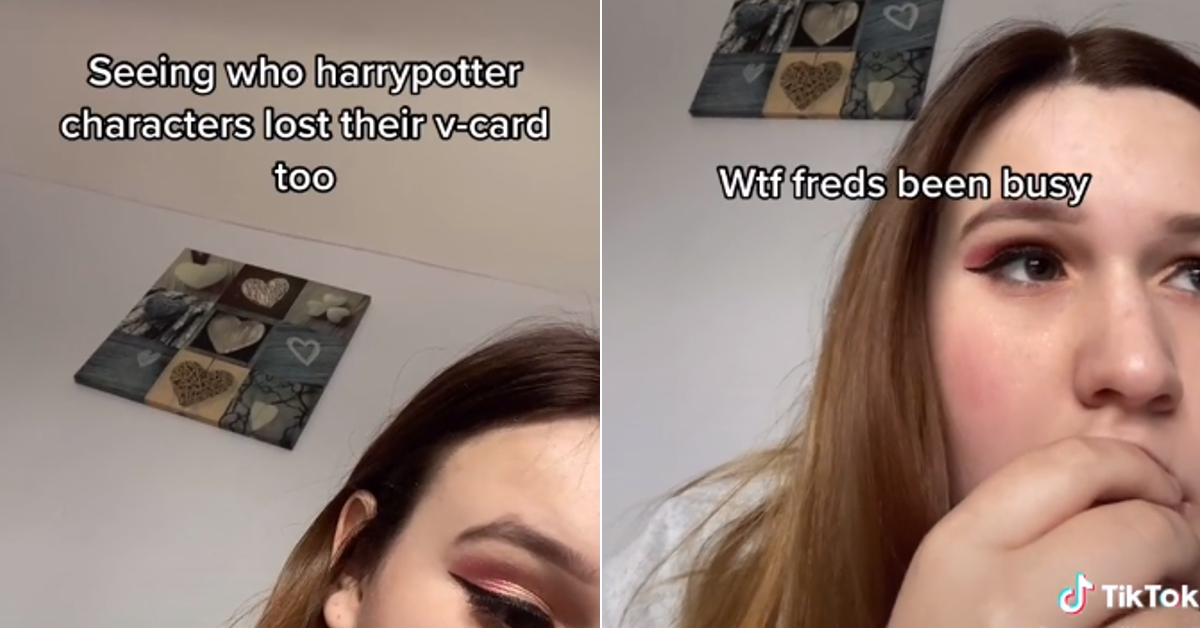What Does V Card Mean on TikTok? It Might Not Be What You Think
Published July 26 2021, 10:27 a.m. ET

It's tough not to feel old whenever you're browsing a new social media platform and you're assaulted with a bunch of terms you don't understand. Whether it's people calling things "cheugy" or finding out what "art of the zoo" means, it can cause your head to spin a little bit and make you feel super out of touch.
The term "v card" has been around for a while, but right now there's a TikTok trend involving "v cards" that has a bunch of people wanting to know: What does "v card" mean on TikTok?

What does v card mean on TikTok?
In certain uses, "v card" basically refers to "virginity." According to Urban Dictionary: "Term used to define one's virginity. All virgins have a 'v card' until they 'cash it in' for sex."
Currently, there are a ton of TikTok videos on the platform discussing the ages that famous celebrities were when they lost their virginity.
There are also many clips that discuss the struggles of being a virgin. Some people explain the benefits of never sleeping with someone, and there are also some clips about ... well ... weird parents who "inspect" their daughters to see whether or not they're still virgins. Yikes.
V cards should not to be confused with vCards, which is a different thing entirely.
If you're worked in computing or business for a long time, then you're probably well-acquainted with vCards and more specifically, VCF files. VCF stands for "virtual contact file." They were created in 1995 by The Versit Consortium, a coalition of leading tech companies at the time, including IBM, AT&T Technologies (it'd go on to become Lucent), Siemens, and Apple.
The idea was that they wanted businesses to play nice with one another and use standardized file formats to help easily transfer data. If I'm a business person who is rocking IBM computers, but my home unit is an Apple one, or I have a Siemens PDA (remember, this was well before smartphones) that I'm inputting all of my data into, I'd want some kind of standardized way of easily managing my virtual Rolodex across all devices. vCards made that possible.
vCards were basically virtual business cards that people could easily exchange with one another instead of just keeping an alphabetized binder of various cards on their person like they're collecting Pokémon cards.
As time progressed and more people began using email with integrated software that managed and stored your contacts (instead of having to manually type it out each time), the VCF file format became the prevailing means of storing a wide breadth of information pertaining to an individual person.
Someone's full name and number, address, company name, email, and other information could be attributed to their vCard.
So when someone's asking for a vCard on TikTok, they may be basically asking another person for their virtual business card, which can be customized to have added fields to them (links to website/social media handle links, etc.).
What makes vCards so convenient is how easy it is to tap on one on your smartphone and have all of that information immediately added to your phone's contacts. It's completely seamless and doesn't require you to manually input it yourself and manage any potential duplicate information.
However, since vCard is a term that can mean such wildly different things, maybe the next time you're asking to take someone's vCard, don't seem so enthusiastic about it. And if you're asking via text, write vCard contact, just to be safe.